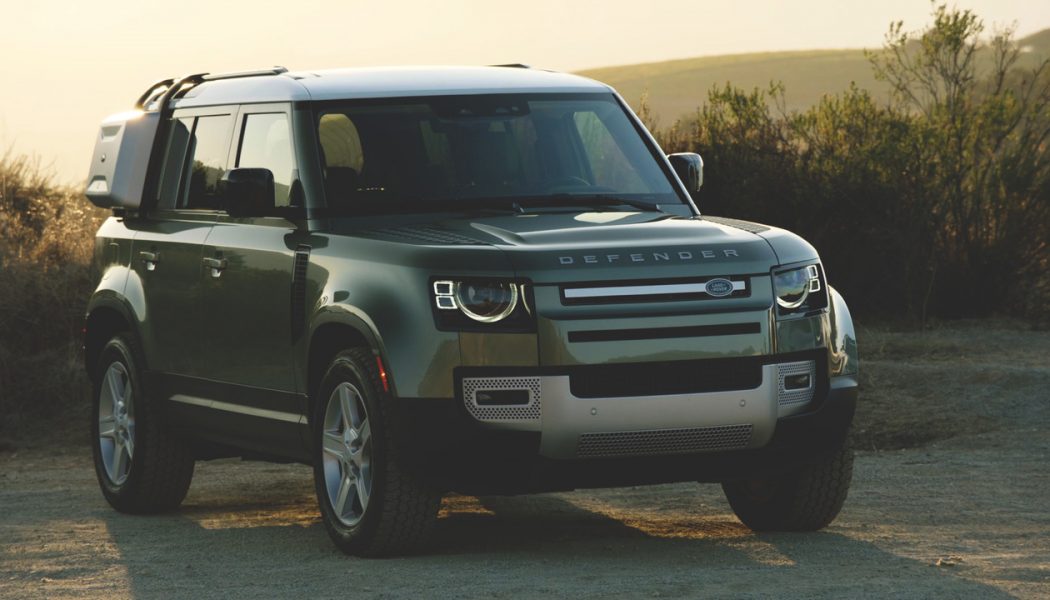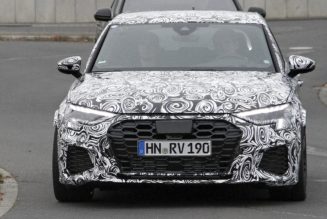Yakima may not have invented the roof-mounted cargo box, but it continues to tinker with the basic concept. The CBX Solar, the 16.0-cubic-foot CBX Solar counterpart to the lesser Yakima CBX 16 cargo box, advances its cargo-carrying capabilities by adding an integrated solar panel to the top side of the unit. The CBX Solar is capable of supplying up to 36 watts of power by way of two 5-volt USB ports, both of which Yakima hides within the cargo box itself. That’s enough juice to charge small electronics such as cell phones and portable speakers.
Big Sun
At $1,299, the CBX Solar stickers for $450 more than the CBX 16, which is no insignificant sum and makes the CBX Solar the most expensive cargo box in the company’s lineup. Nevertheless, we strapped the low-slung CBX Solar to the roof of our 1993 Honda Accord sedan to see how the box performed over the course of a two-week journey from Chicago, Illinois to Aspen, Colorado and back, during which we shoved both luggage and skis within the 83.0-inch long unit.
At 60 pounds (3 pounds more than the CBX 16), the CBX Solar is light enough for two people to lift with relative ease. Once positioned on your car’s aftermarket or factory crossbars (Yakima notes the box will work with any type), the CBX Solar’s rack mounts easily slide about to handle a crossbar spread of as little as 24.0 inches and as much as 35.5 inches. Yakima even fits a knob on each side of the CBX Solar’s interior to manually tighten the box’s mounts around your car’s crossbars. We, however, found the knob somewhat difficult to grasp and ultimately broke out a socket wrench—with a square-head screwdriver attachment—to get the job done more comfortably and quickly.
Regardless, the CBX Solar’s quality materials give it a sturdy feel. It also looks slicker than a number of other roof carriers available today. Alas, the CBX’s low-slung style limits its ability to hold thicker luggage. While our chunkiest suitcase fit snugly within the 15.0-inch tall box, we discovered its girth made it more difficult to latch the CBX Solar’s dual-side opening lid shut. (This was not an issue with less bulky items on board, such as smaller luggage or skis. )
On the Road
Although our aging Accord SE’s 140-hp four-cylinder engine struggled with the extra weight of the CBX Solar and our loads of luggage packed within it, the old Honda’s fuel economy averaged around 24.9 mpg over the course of the approximately 2,500 miles of—mostly highway—driving. Not too bad for a midsize sedan—wearing winter rubber—with an EPA fuel economy rating of 26 mpg on the highway and 22 mpg combined.
Credit the CBX Solar’s svelte shape, as well as the fact that the Solar’s built-in USB charging ports all but eliminated any need to idle the car’s engine to keep its electrical system active in order to charge our devices at rest stops. While the 1993 Accord lacked any USB ports when new, the car we drove included three such ports: one in its aftermarket head unit and two from an aftermarket 12-volt plug-in converter.
Even with all these in-car USB chargers, though, we often found our phones running low on juice. Blame the fact Honda placed the cupholders in this generation of Accord directly in front of the center stack-mounted 12-volt outlet. Due to this, the 12-volt-plug-powered USB ports were inaccessible any time both cupholders were in use (in other words, much of the trip). More modern vehicles with better ergonomics and built-in USB ports might eliminate the need to charge devices during rest stops, which in turn might undermine the benefits of the CBX Solar relative to its cheaper CBX 16 counterpart.
Maybe overlanders, who both need a place to store their gear and charge their small devices without using their limited resources (such as their vehicle’s fuel or battery capacity), are likely to find more practical use from the CBX Solar. Even so, the extra coin Yakima charges for the CBX Solar over the CBX 16 is far greater than the cost of many portable solar chargers, including BigBlue’s sub-$100 28-watt model that includes three USB ports and measures a compact 11.1 inches long when folded.
Solar Charge
Yakima’s crafted a sleek, spacious (provided you don’t place anything too tall inside), and modern roof-mounted cargo box with the CBX Solar. Arguably the biggest thing holding this piece of cargo-carrying kit back is its price, as the CBX Solar struggles to justify the delta between it and the lesser CBX 16, which lacks the Solar’s solar panel and integrated charger but seemingly mirrors everything else about Yakima’s flagship roof box—and all for hundreds of dollars less.
Although we might struggle with rationalizing the additional cost of the CBX Solar over the CBX 16 (especially when portable solar chargers are available with similar wattage for significantly less money), we still support the basic concept of Yakima’s high-dollar cargo carrier, which provides a more energy-efficient alternative to charging small electronics in an idling vehicle. We bet it’s only a matter of time until Yakima, and others, begin applying this technology to more of its roof boxes, which could lower the cost of entry for such a setup.










